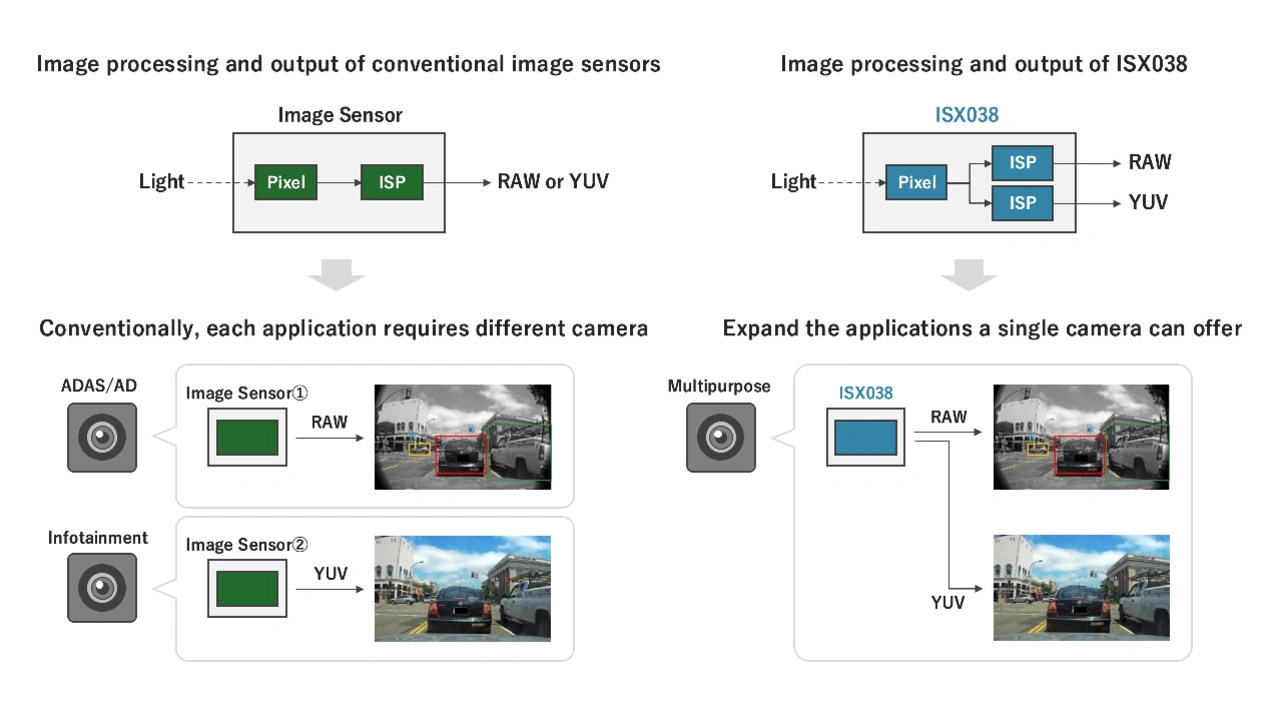Sony sensor for vehicle cameras
CMOS image sensor processes RAW and YUV images simultaneously
Sony Semiconductor Solutions launches the industry's first CMOS image sensor for automotive cameras that can simultaneously process and output RAW and YUV images.
RAW images are required for the detection and recognition of the external environment by ADAS and AD systems. YUV images, on the other hand, are used for infotainment applications such as drive recorders and augmented reality (AR).
The new ISX038 CMOS image sensor allows the simultaneous processing and output of RAW and YUV images. The Sony sensor with 8.39 effective megapixels therefore makes it possible to provide more applications with a single camera than before. This can contribute to the simplification of camera systems in vehicles and thus save space, costs and energy.
The structure of the sensor is stacked and consists of a pixel chip and a logic chip with signal processing circuitry. The logic chip is equipped with an image signal processor (ISP) developed by Sony. The ISX038 is compatible with Mobileye's EyeQ6 system-on-a-chip (SoC), which addresses ADAS and AD solutions.

Key features of the ISX038
- The industry's first sensor that can process and output RAW and YUV images simultaneously: The new sensor is equipped with dedicated image signal processors for RAW and YUV images. This allows it to output two types of images simultaneously via two independent interfaces, optimising the image quality for the respective application.
- Wide dynamic range, even with simultaneous use of HDR and LED flicker suppression: When driving, objects must be precisely captured and recognised even in road environments with significant differences in brightness, for example at tunnel entrances and exits. With the increasing use of LED-based signalling and other traffic equipment, vehicle cameras must also be able to suppress LED flicker, even in HDR images. The proprietary pixel structure and unique exposure process of this sensor improves the illumination level, ensuring a wide dynamic range of 106 dB - even when using HDR recording and LED flicker suppression at the same time. In dynamic range priority mode, the dynamic range even increases to 130 dB. This design also helps to reduce motion artefacts that can occur when shooting moving subjects.
- Compatibility with proven products: The new product is compatible with previous Sony products, which have already proven themselves in the ADAS and AD applications of numerous automotive manufacturers. Data that was captured with earlier products - for example driving data from vehicle cameras - can continue to be used with the new sensor. This makes ADAS and AD development easier for car manufacturers and partners.
- Complies with automotive standards: The sensor fulfils the requirements for AEC-Q100 Grade 2 reliability tests on automotive electronics components in mass production. In addition, Sony has established a development process that conforms to the ISO 26262 standard for functional safety in road vehicles and meets the ASIL-B(D) safety level.








